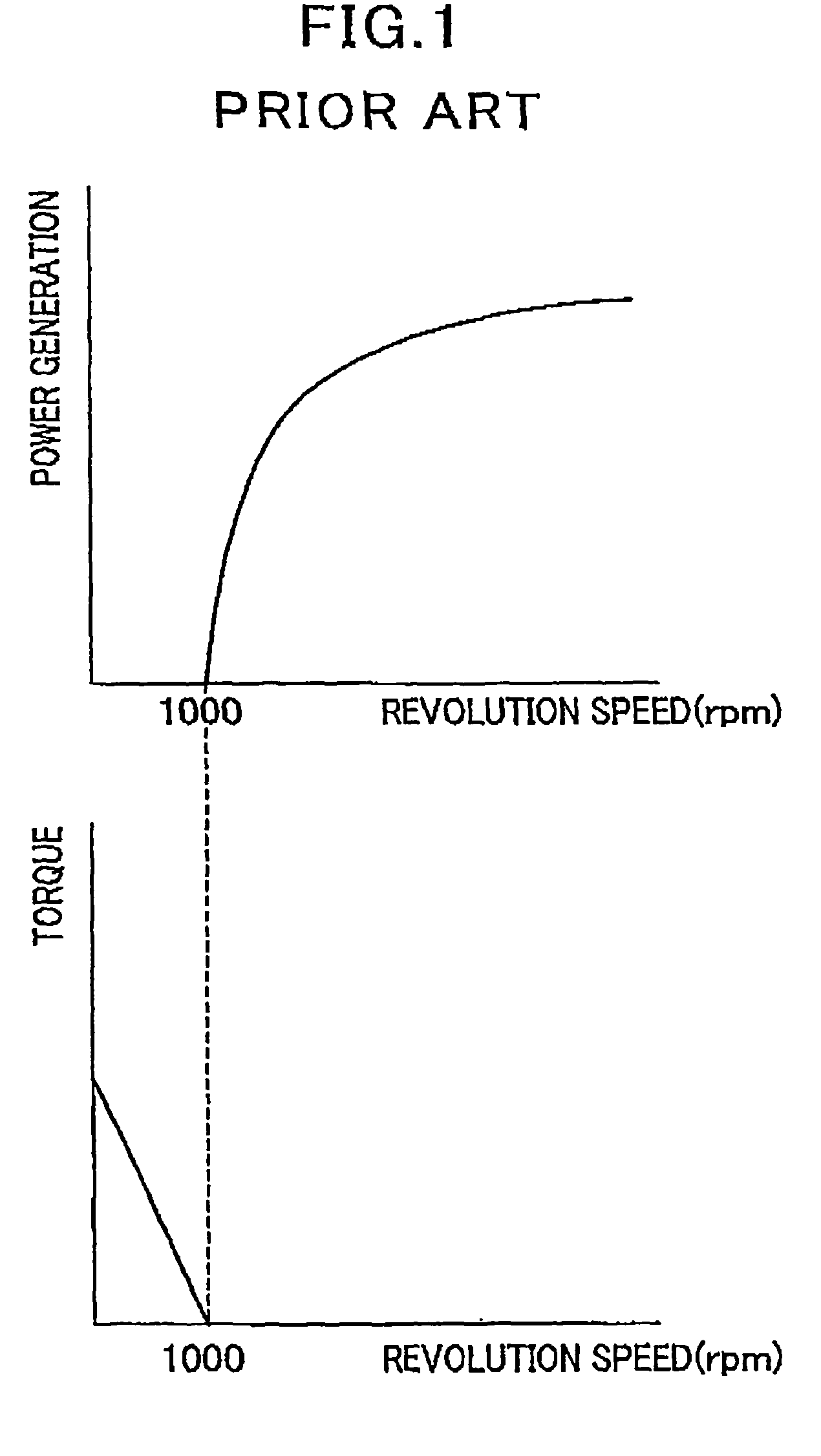On-vehicle rotary electric machine operating on two modes of rectification
a rotary electric machine and rectification technology, applied in the direction of locomotive transmission, electric generator control, motor propulsion transmission, etc., can solve the problems of insufficient torque at the revolution speed, inability to send electric current from the battery during motor operation, unstable engine rotation, etc., to achieve the effect of high output and equivalent reduction of inductan
- Summary
- Abstract
- Description
- Claims
- Application Information
AI Technical Summary
Benefits of technology
Problems solved by technology
Method used
Image
Examples
Embodiment Construction
[0032]A vehicle rotary electric machine according to an embodiment to which the present invention is applied will be described in detail with reference to the drawings FIGS. 3 to 9.
[0033]FIG. 3 is a connection wiring diagram showing an overall configuration of a vehicle rotary electric machine according to an embodiment. As shown in FIG. 3, the rotary electric machine 100 according to the present embodiment includes a three-phase winding 1, a field winding 2, a rectifying device 3, and a controlling device S. The three-phase winding 1 serves as a multi-phase winding included in a stator. The field winding 2 is included in a rotor. The three-phase winding 1 is wound around a stator core (not shown) at a pitch of 180 electrical degrees equivalent to an amount for a single magnetic pole of the rotor in which the field winding 2 is provided. Each phase winding is connected by a Y-connection. Three output terminals (winding terminals) of each phase of the three-phase winding 1 and a neut...
PUM
 Login to View More
Login to View More Abstract
Description
Claims
Application Information
 Login to View More
Login to View More - R&D
- Intellectual Property
- Life Sciences
- Materials
- Tech Scout
- Unparalleled Data Quality
- Higher Quality Content
- 60% Fewer Hallucinations
Browse by: Latest US Patents, China's latest patents, Technical Efficacy Thesaurus, Application Domain, Technology Topic, Popular Technical Reports.
© 2025 PatSnap. All rights reserved.Legal|Privacy policy|Modern Slavery Act Transparency Statement|Sitemap|About US| Contact US: help@patsnap.com



